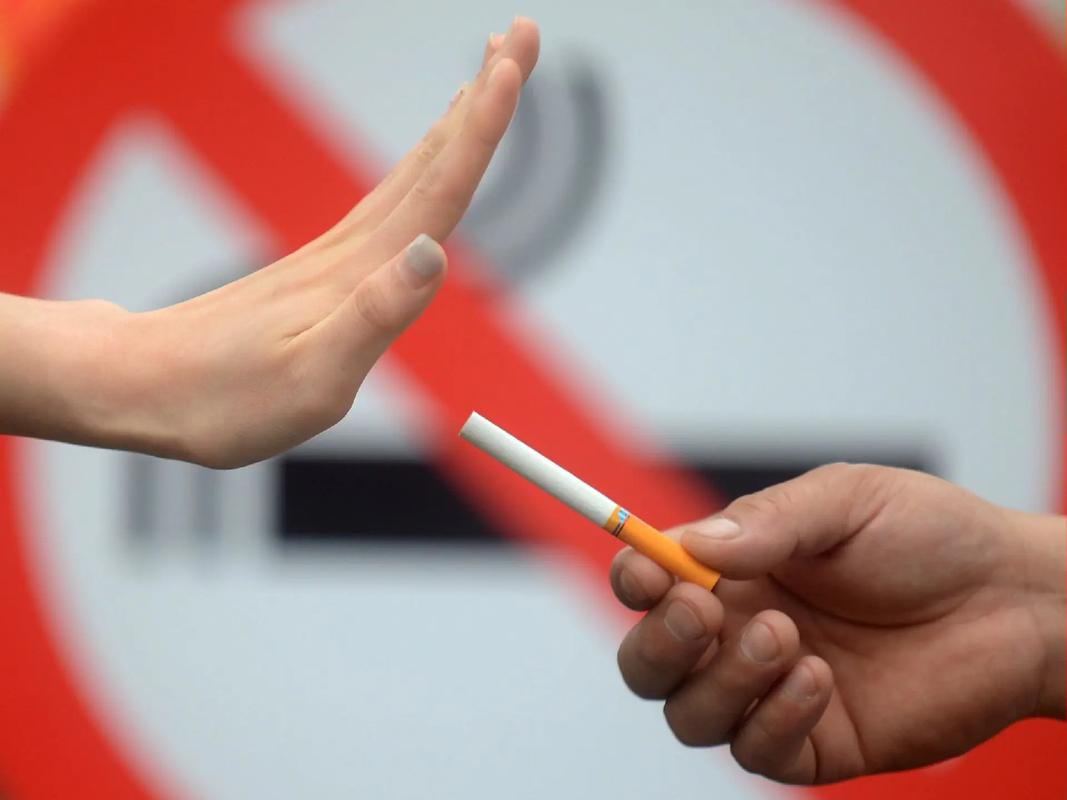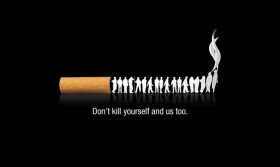The Hidden Grip: How Smoking Tightens Its Hold on Your Blood Vessels
We often hear that smoking is bad for us. It’s a message plastered on cigarette packs and woven into public health campaigns. We associate it with lung cancer, chronic bronchitis, and that persistent cough. But what if the most immediate and insidious damage is happening not in your lungs with every breath, but throughout your entire body with every beat of your heart? This damage revolves around a crucial, yet often overlooked, concept in cardiovascular health: the vascular resistance coefficient. In simple terms, smoking systematically increases your vascular resistance, putting your entire circulatory system under immense, dangerous pressure.
To understand this, let's first picture your circulatory system as an intricate network of highways, roads, and tiny capillaries, which are like neighborhood streets. Your heart is the powerful engine pumping blood—the delivery trucks carrying oxygen and nutrients—through this network. Vascular resistance is the measure of the opposition to flow within these blood vessels. Think of it as the traffic and the number of open lanes. Low resistance means wide, clear, flexible highways, allowing for smooth, efficient traffic flow. High resistance is like a city during perpetual rush hour, with lanes closed, roads narrowed, and traffic moving at a frustrating, inefficient crawl, forcing the engine (your heart) to work much, much harder.

So, how exactly does smoking orchestrate this traffic nightmare within your body? It’s a multi-pronged attack, and it begins within minutes of your first puff.
The Immediate Constrictor: Nicotine's Direct Assault
The primary culprit in the short term is nicotine. While it’s the addictive agent, its effects on your blood vessels are profound and immediate. Nicotine acts as a potent stimulant, binding to receptors in the walls of your blood vessels, particularly the arteries and arterioles (the smaller highways leading into neighborhoods). This binding triggers the release of a hormone called norepinephrine, which is a powerful vasoconstrictor. Vasoconstriction is the process where the smooth muscles in the vessel walls tighten, causing the diameter of the vessel to narrow.
Imagine a garden hose. If you squeeze it, the water squirts out with more force because you've increased the resistance inside the hose. This is exactly what nicotine does to your arteries. This acute increase in vascular resistance from nicotine-induced vasoconstriction causes an immediate spike in blood pressure and forces your heart to pump against a tighter, more resistant system. This is why a smoker's heart rate and blood pressure often rise right after a cigarette. It’s a direct, chemical-induced strangulation of your vascular network.
The Long-Term Saboteur: Endothelial Dysfunction and Inflammation
While nicotine is the swift constrictor, the long-term damage from the thousands of other chemicals in tobacco smoke is even more destructive. This is where we encounter a key long-tail concept: the role of chronic endothelial inflammation in elevating peripheral vascular resistance.
The endothelium is a delicate, single-cell layer that lines the entire inside of your blood vessels. It is far from a simple wallpaper; it is an active organ responsible for maintaining vascular health. A healthy endothelium produces a vital substance called nitric oxide (NO), which is a master vasodilator. It signals the vessel walls to relax and widen, ensuring low resistance and healthy blood flow.
Tobacco smoke directly poisons this delicate lining. The toxic chemicals, including carbon monoxide and oxidative stress-inducing agents, cause endothelial dysfunction and increased systemic vascular resistance. The endothelium becomes inflamed and damaged, losing its ability to produce adequate nitric oxide. Without sufficient NO, the blood vessels lose their ability to relax properly. They remain in a semi-constricted state, perpetually primed for higher resistance. This is a fundamental shift from a flexible, responsive system to a rigid, stiffened one.
Furthermore, the chronic inflammation caused by smoking prompts the endothelium to become "sticky." This attracts inflammatory cells and allows fats and cholesterol from the blood to seep into the vessel wall, initiating the process of atherosclerosis, or hardening of the arteries. This is a critical link in the chain: the link between smoking-induced arterial stiffness and elevated vascular resistance. Atherosclerosis is the physical manifestation of increased resistance—plaques literally narrow the passageway for blood, like sludge building up in a pipe, creating a permanent, physical barrier to flow.
The Oxygen Thief: Carbon Monoxide and Blood Viscosity
Another key player in this destructive process is carbon monoxide (CO). This gas, present in high concentrations in cigarette smoke, has a far greater affinity for hemoglobin in your red blood cells than oxygen does. It hijacks the seats on the "delivery trucks" meant for oxygen, forming carboxyhemoglobin. This drastically reduces the amount of oxygen delivered to your tissues and organs, including the heart muscle itself and the endothelial lining.
In response to this oxygen starvation, the body tries to compensate by producing more red blood cells, a condition known as polycythemia. While this might seem like a good solution, it backfires spectacularly in terms of vascular resistance. More red blood cells make the blood thicker and more viscous. Just as pumping molasses requires more effort than pumping water, pumping thicker blood significantly increases blood viscosity and vascular resistance calculations. The heart must generate more force to push this sludge-like blood through vessels that are already narrowed and stiff.
The Cumulative Impact: From Hypertension to Heart Failure
The combined effects of constant vasoconstriction, endothelial dysfunction, atherosclerotic plaque buildup, and increased blood viscosity create a perfect storm for your cardiovascular system. The impact of long-term smoking on vascular hemodynamics is severe and cumulative.
Sustained high vascular resistance is the primary driver of hypertension (high blood pressure). Your heart is now a muscle forced to lift heavier weights every minute of every day. This leads to left ventricular hypertrophy, where the main pumping chamber of the heart thickens. Like any overworked muscle, a thickened heart can become stiff and inefficient. Over time, this can progress to heart failure, where the heart simply can no longer pump enough blood to meet the body's demands.
The implications extend beyond the heart. Increased vascular resistance in the kidneys can impair their function and further exacerbate hypertension. In the brain, it significantly raises the risk of stroke. In the limbs, it can lead to Peripheral Artery Disease (PAD), causing pain, numbness, and in severe cases, gangrene and amputation. This is the stark reality of peripheral vascular resistance and smoking-related cardiovascular risks.
The Glimmer of Hope: Reversibility and Healing
The narrative of smoking and vascular damage, while grim, is not entirely without hope. One of the most powerful facts is that the human body possesses a remarkable capacity to heal, especially when we stop the assault. The process of reducing vascular resistance through smoking cessation begins shockingly quickly.
Within just 20 minutes of your last cigarette, your blood pressure and pulse rate begin to normalize as the acute effects of nicotine wear off. Within 24 hours, your risk of a heart attack starts to decrease. Over the following weeks and months, the chronic inflammation begins to subside. The endothelium, freed from the constant barrage of toxins, can slowly start to repair itself and restore its production of nitric oxide.
Studies have shown that vascular function can improve significantly within the first few months of quitting. While the reversal of established atherosclerotic plaque is slower and may not be complete, the progression halts, and the functional component—the ability of vessels to dilate—improves dramatically. This leads to a measurable decrease in vascular resistance and improved cardiac afterload, meaning the heart has an easier, less burdensome job. The risk of coronary heart disease drops to about half that of a smoker's within one to two years. This healing is a powerful testament to why it is never too late to quit.
In conclusion, the connection between smoking and an increased vascular resistance coefficient is one of the most compelling reasons to avoid or quit smoking. It's not just about "lung health" in some distant future; it's about the here-and-now pressure inside your entire circulatory system. Smoking transforms your flexible, efficient vascular network into a constricted, inflamed, and stiffened maze, forcing your heart to work itself to exhaustion. Understanding this hidden grip is the first step toward choosing to loosen it, allowing your body’s natural pathways to clear and your heart to beat with ease once more.












